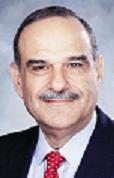New Orleans as Petri Dish?

Best of the week's news, this is excerpted from an AP story as it appeared in KansasCity.com:
If the world is a classroom, New Orleans is a petri dish.
The city, notorious for having one of the worst public school systems in the country, has emerged from the aftermath of Hurricane Katrina as an experiment in education.
Privately run charter schools, relatively limited before last year’s storm, now outnumber government-run public schools. And the number could rise as the demand for quality schools grows in this still-recovering city, state education officials predict.
“Suddenly there’s an opportunity to improve the community and education as a whole,” said Robin Jarvis, who oversees the state-run school district that took over most of the city’s public schools after Katrina. “I think largely, before, they’d given up.”
Since Katrina, less than half the city’s public schools have reopened. Of the 53 that have opened, 17 are run by the state, five by the cash-strapped local school board and 31 by charter groups. Total enrollment, now at about 25,000 students but changing regularly, also is less than half of what it was before Katrina, school officials say.
People on both sides of the charter debate are watching what happens closely for evidence to bolster their theories — that giving parents choices in public education pays off in student achievement, or that relying increasingly on independent, nonprofit groups to teach children is a dicey proposition.
While supporters promote charters as a step toward strengthening the city’s educational system, critics see them as eroding what’s left of traditional public schools. The National Alliance for Public Charter Schools has called New Orleans the closest the country has come to an all-charter district.
“You had a natural disaster in New Orleans,” said charter critic Nat LaCour, secretary-treasurer of the American Federation of Teachers. “Now what’s happened in New Orleans is a man-made disaster.”
Charter schools receive public funding and generally accept a wide range of students. The schools have caught on in parts of the country where traditional public schools have faltered. Their charters can be pulled by the agencies that grant them — in New Orleans’ case, the state or the Orleans Parish School Board — if progress isn’t shown in student test scores. Annual progress reports are required.
In reaching those goals, charter schools tend to have greater freedom than other public schools. For example, they can set their own curricula and can focus, if they choose, on specific study areas. At least in New Orleans, many teachers also are held to annual performance reviews.
“We’re trying to develop a system of schools that will be absolutely the best for children in an urban area. If we succeed in that, we’ll be a model for the rest of the country,” said Linda Johnson, a member of the state Board of Elementary and Secondary Education.
Nationwide, more than 1 million students were enrolled in 3,617 charters across the country at the start of the last school term, according to the Center for Education Reform, a group that advocates school choice and tracks charters.
Johnson urged patience in seeing through a years-long experiment that she believes could yield an educational standard.
“I know everybody wants everything today,” she said. “But it’s going to take some time. In the end, all of New Orleans will be better.”





0 Comments:
Post a Comment
<< Home